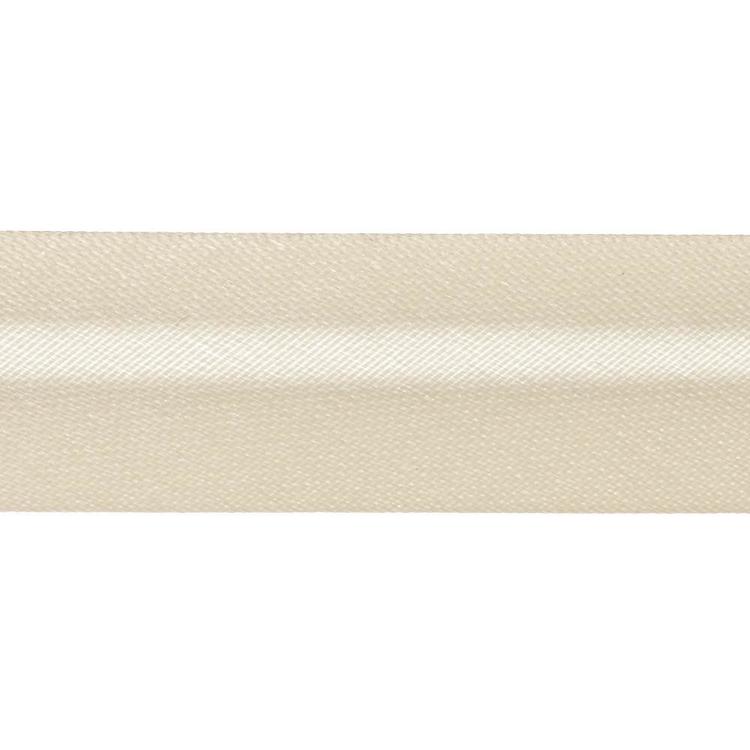 | ||
| Your browser is not supported. | ||
|
Please browse our site using any of the following options:
| ||
Satin Binding
Want something different from standard cotton binding? Check out satin bias binding in different colours and options at Spotlight online or in-store!
1 item found.
Learn All About Satin Used In Bias Binding
There are many reasons why crafters choose satin bias binding for their projects. After all, there is no better binding for a matching satin fabric than satin binding. And since it is also quite affordable, you cannot go wrong with this lovely interfacing with the slight sheen.
Do you want to know more about satin and why you should incorporate it in your crafting projects? Be sure to read on.
How Is Satin Made?
Satin is not exactly a material. Instead, satin refers to a specific weaving method. This means that satin fabrics can be made with different fabric fibres, but still achieve a similar look.
The unique weave of satin consists of four or more weft threads. These threads are pulled over a single warp thread or pulled underneath depending on the manufacturer. The warp threads remain on the loom during the manufacturing process, which gives it some sturdiness as well.
Because of the unique weaving method, most satin fabrics come with the most beautiful drape, some flexibility, and superior softness. You will also be able to distinguish between a shiny side and a dull side, making it easier to identify the front and the back of your fabric.
Where Does Satin Come From?
It is believed that satin was first created in China in the Middle Ages, more specifically in the city of Quanzhou. Back in the Middle Ages, this city was known under the name "Zaitun". Obviously, it is clear why this material received the worldwide name satin, giving its similarities with the original town name.
Historians believe that satin was traded freely along the Silk Road and eventually made its way to the Middle East. They also believe that the first "western" country using satin was Italy, and there is some historic evidence from the twelfth century pointing to this. However, the material would not become known to other European countries until the fourteenth century.
Even though satin is more affordable than most types of silk, it is important to note that this material was considered quite luxurious throughout the ages. In fact, the Palace of Versailles in France contains furniture that is almost predominantly upholstered in satin.
Why Is Satin A Great Material To Work With?
Satin has benefits for garment construction, but also for upholstery. There is no limit to the applications for satin, and the numerous benefits associated with this material undoubtedly have something to do with that.
One of the desired properties of satin is the shiny front, which gives the overall material a luxurious and elegant aesthetic. On top of that, the shiny side is also quite soft, which makes it a great choice for anyone who suffers from certain skin problems.
Satin is also known for its superior drape, which also has to do with the weaving method that is employed for the creation of this material. The weave allows an incredible concentration of fabric fibres as well as flexibility, which only benefits dresses made in this kind of material.
In addition to its softness and beautiful drape, satin is also known to be quite durable. Since manufacturers use long filament fibres and weave them with more than two threads, it delivers a stronger fabric, especially when compared to standard weaves. Of course, this also means that satin is suitable for projects that will be subject to lots of wear and tear, including upholstery. Evidently, the Palace of Versailles' furniture is living proof of that.
Another brilliant quality many people love about satin is its natural wrinkle-resistance. So, when this fabric is washed, it will not come out all wrinkly like you would get with linen. If you do not love a lot of ironing, and want to prevent this problem with your interfacing, then choosing satin over other materials will not be a bad idea. Of course, this does not only apply to bias binding, but also satin fabrics you will use for garment construction and other projects.
We do need to mention that satin is not the easiest fabric to work with, especially for beginners who are still learning to handle their fabric during sewing. As you may expect, satin does have some slippery qualities, and this can make it more difficult to sew with. While there are some simple treatments you can use on the surface of the fabric to counter these problems, Spotlight recommends that only experienced crafters use fabrics made from satin.











